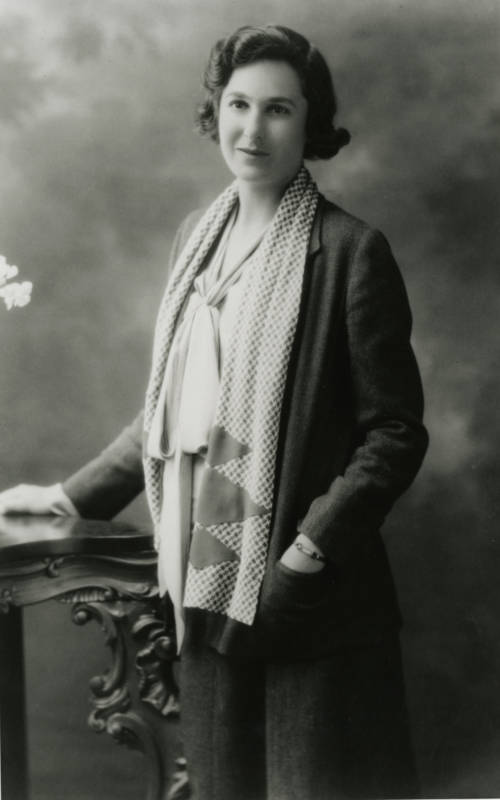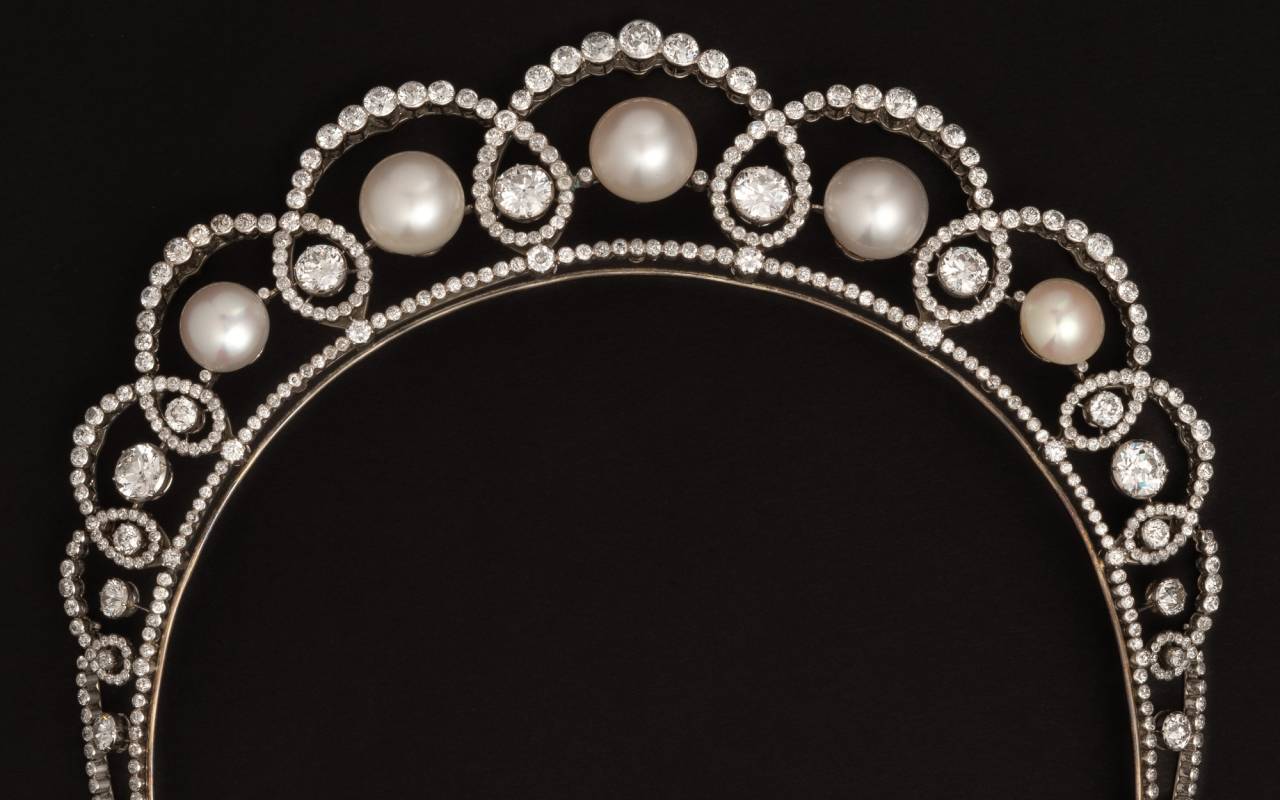
A Boucheron Tiara/ Necklace
Many pieces of Rothschild family jewellery are displayed in A Rothschild Treasury, including this tiara/necklace, by the Parisian jewellers Boucheron, commissioned by Baron Edmond de Rothschild (1845-1934) as a wedding gift for his daughter-in-law Dorothy in 1913.
After a whirlwind romance, 17-year old Dorothy Pinto (1895-1988), married James de Rothschild (1878-1957) on 25 February 1913 in the Central Synagogue, Great Portland Street, London.
The Synagogue was decorated with perfumed white arum lilies, white lilac, and long festoons of emerald green smilax. The bride’s dress of white satin, draped with chiffon, and finished with exquisite old lace and pearls, was by the leading Parisian couturier Callot Soeurs. ‘Her veil of white tulle fell far down on her long train, and was worn over a wreath of orange blossoms’.

Orange blossom, for chastity, purity and eternal love, became de rigueur for a bride after Queen Victoria wore it at her wedding in 1840. Dorothy’s wedding dress, subsequently altered to an elegant evening dress, is still in the collection at Waddesdon, as are her kid gloves, and wax orange blossom wreath.
The newspapers at the time commented on the lavish ceremony, and the wedding gifts. The Yorkshire Evening Post wrote that ‘the Rothschild family had literally showered diamonds on the young bride’. The Jewish Chronicle listed the gifts in full and noted that ‘the presents were numerous and exceptional in value and beauty. Many of the very handsome jewels were by Boucheron, Paris’. Under the gifts from Baron Edmond de Rothschild is a pearl and diamond tiara, aptly denoting eternal love.

Boucheron’s own archives record the commission of this piece on 3 February 1913 for a total of 48,000 francs.
In the early 20th century the best jewellery houses were in fierce competition to meet the growing demand for natural pearls which were set in every sort of jewellery. In 1908, only 5 years before the Rothschild tiara was made, George Frederick Kunz and Charles Hugh Stevenson wrote in The Book of the Pearl ‘….pearls are in the highest fashion, and the woman of rank and wealth usually prizes first among her jewels her necklace of pearls’.
A photograph from 1913 shows the tiara as a necklace with a perfectly spherical pendant pearl of similar scale. Dorothy’s own jewellery inventory records that the sixth pearl was turned into a ring and the word ‘necklace’ is crossed out and replaced by ‘tiara’.
The sophisticated mechanics of jewellery making at this time has never been surpassed and wherever possible versatility was the aim, particularly for jewellery intended for brides. Tiaras might be taken off their frames to form necklaces, and pendants could be dismantled into brooches with the use of delicate tool kits secreted in the base of the fitted cases.

After James’s death in 1957, when the Manor was bequeathed to the National Trust, Dorothy worked tirelessly to prepare it for public opening, and then chaired the Management Committee until her own death in 1988, overseeing all manner of projects, such as initiating the famous series of catalogues of the collections. The display of these personal jewels celebrates her central role in the transformation and preservation of Waddesdon.
By Dr Mia Jackson, Curator of Decorative Arts at Waddesdon, with thanks to Geoffrey Munn.
A longer version of this article first appeared in Jewellery History Today, issue 36, Autumn 2019, the magazine of The Society of Jewellery Historians



